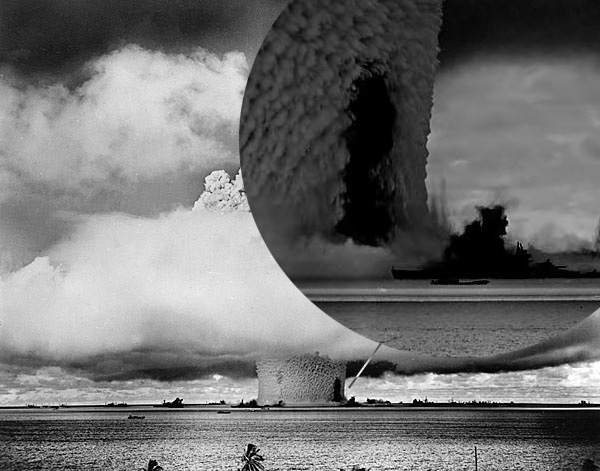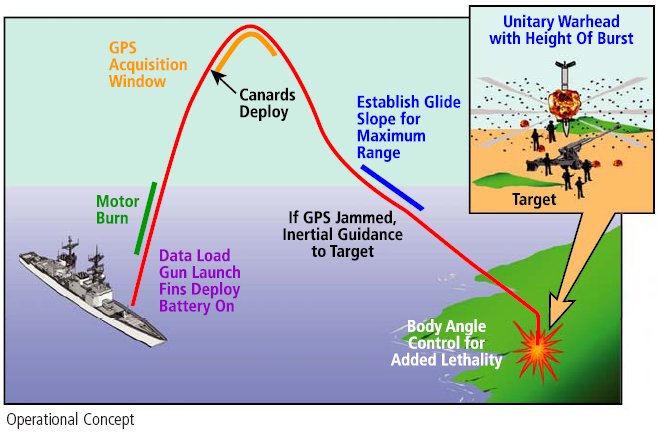From Test ABLE:
Sakawa was moored off the port quarter of
Nevada. The actual detonation of the Able bomb took place some 490 yards above and slightly to starboard of
Sakawa's stern. Following the blast, observers noted that
Sakawa's superstructure and hull had suffered major damage. The superstructure aft of the bridge was smashed down, as was the stack, which collapsed forward. The mainmast toppled forward and to port until it overhung the side by one-third of its length. Reports also noted that "the tops of the after mounts were crushed. The tops of the forward mounts were dished in a fore and aft V having a two-foot maximum depression." The worse damage, however, was to the hull. "The stern was most badly damaged.... Its deck plating was crushed inward and shell plating about the counter was twisted and torn open in several places. Shell plating on the starboard side...was badly wrinkled from approximately frame 145 aft." [
69] Other damage included the dislodging of deck fittings, the smashing of the lifeboats, and a fire that broke out on the stern and raged for two hours.
Immediately after the test
Sakawa's stern sank two feet. Through the night the stern continued to settle as the cruiser listed to port. Some 24 hours after the test, the ship lay on its port beam, half submerged, with the stern on the lagoon bottom.
Sakawa's bow sank beneath the lagoon surface at 10:43 a.m. on July 2. According to the U.S. Navy, "flooding unquestionably started when the
Sakawa's stern was ripped open to the sea by the blast....Poor watertight integrity...permitted progressive flooding. After 24.5 hours the main deck was awash. In the next hour rapid progressive flooding, probably due to poorly fitted and damaged hatches, vent trunks, and other fittings in the main deck, sent the
Sakawa to the bottom."At the time of sinking, the Navy tug
Achomawi (ATT-148) had a line aboard
Sakawa and was attempting to pull the ship from astern to shore; the cruiser was moved astern about 150 feet when it finally sank. The Navy was able to board and inspect the cruiser prior to sinking; "diving operations on this vessel were assigned low priority and eventually limited by a time factor to recovery of instruments. Hence no diver's report is available..."



